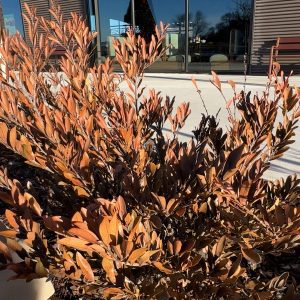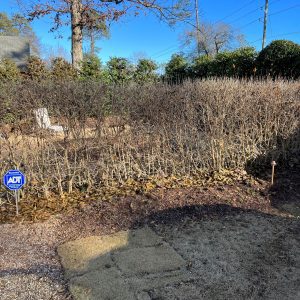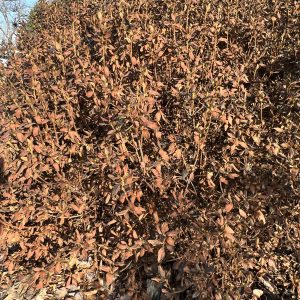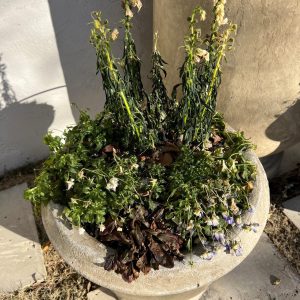Landscaping

In Alabama, there are times where the state experiences extremely cold temperatures. These times of cold weather can cause many plants to exhibit freeze damage, which includes browning and/or defoliation of leaves on many trees and shrubs, along with collapsed, water-soaked foliage on annuals and perennials. The following are some best practices for recovering from freeze damage.
Trees and Shrubs
Refrain from pruning until spring. Watch for new growth to emerge as warmer weather arrives. Be aware that leaves on many woody plants will likely drop, but the plant may still be alive. You can perform a scratch test on the limbs of trees and shrubs to look for green tissue, indicating that the plant is still alive. For any limbs that may be dead, prune out properly as spring growth occurs. You may refer to Woody Landscape Plants: Pruning, ANR-0258 for proper pruning techniques.
Do not fertilize until consistently warm temperatures arrive in the spring, as the addition of fertilizer may stimulate new growth during warmer periods in winter and cause more damage to new tender growth. Be aware that early-spring-blooming woody ornamentals (e.g., azaleas) may have no or reduced blooms due to the freeze.
- Woody ornamentals may exhibit brown, dead foliage and possibly drop all of their leaves.
- Freeze damage on tea olive.
- Spring blooming plants–such as azaleas–may not bloom this year due to freeze damage.
- Winter annuals in a container affected by freeze damage.
Annuals and Perennials
All dead material from annuals may be removed. Hardy annuals–such as pansies–may contain live plant tissue in the crown of the plant, so take care not to damage any living tissue during the removal of any dead parts. For pansies and other annuals, fertilizers–such as calcium nitrate and potassium nitrate–can be applied every two to four weeks until mid-March.
Due to the low inventory of replacement pansies at this time of year, consider adding some of these alternatives to your plantings. Recommended plant replacements include tassel fern, autumn fern, ivy, Lenten rose, thyme, rosemary, ajuga, heuchera (sun/shade varieties), lamium, and bulbs such as daffodils and tulips.
Perennials may be cut back in the late winter to stimulate new growth.





